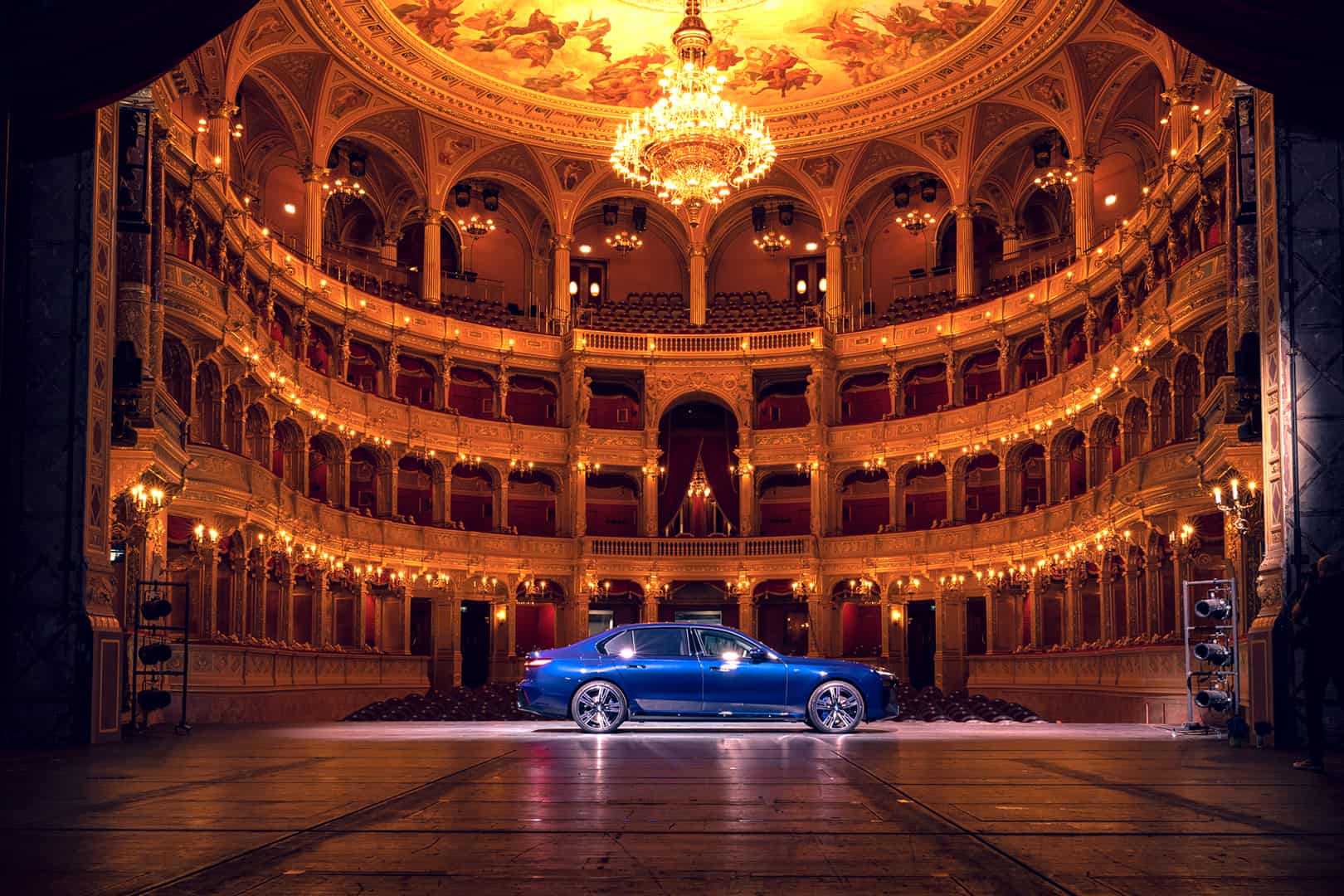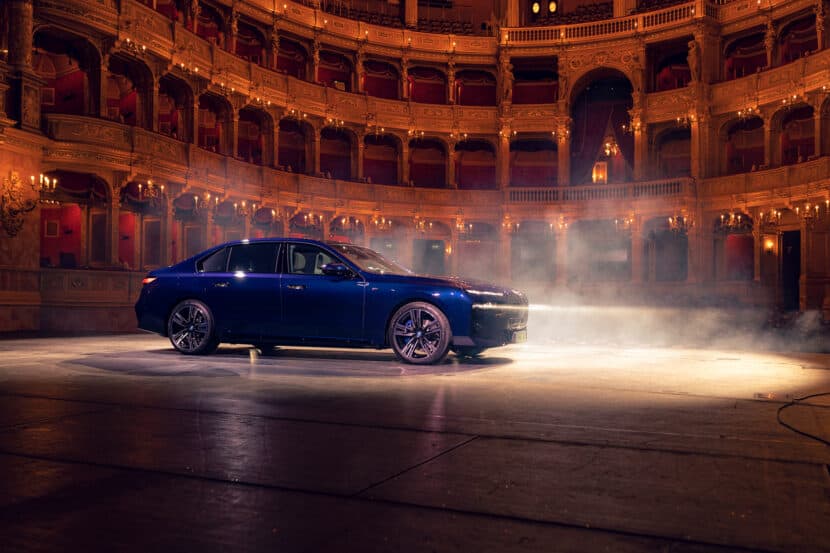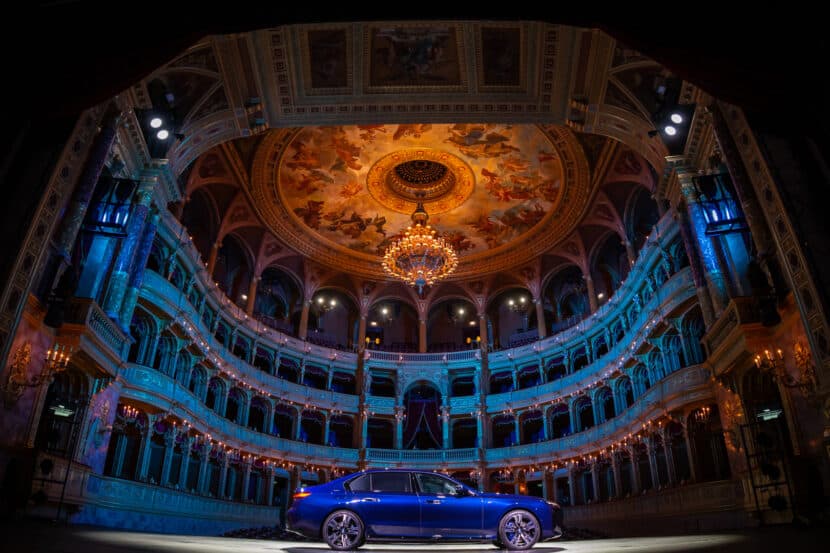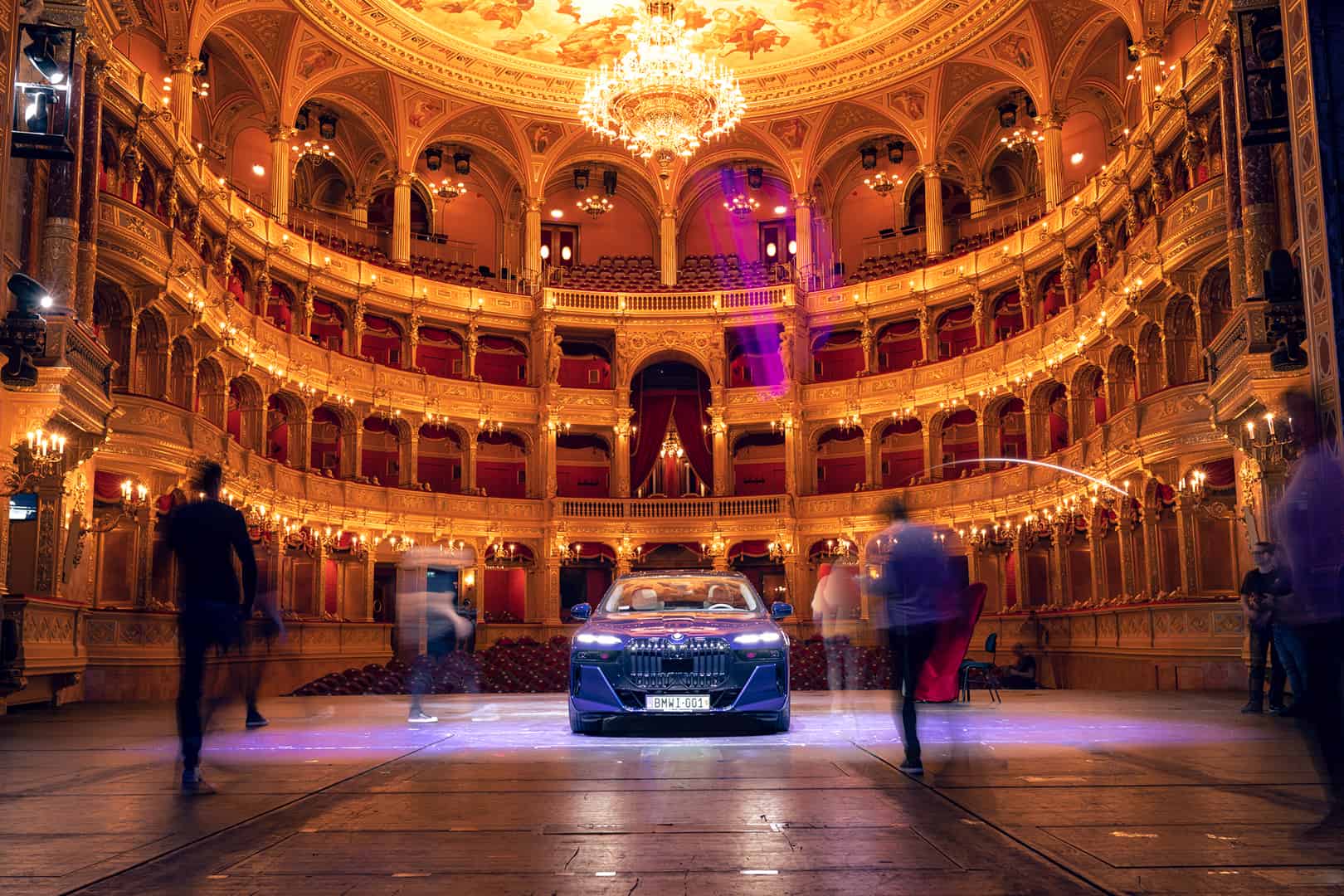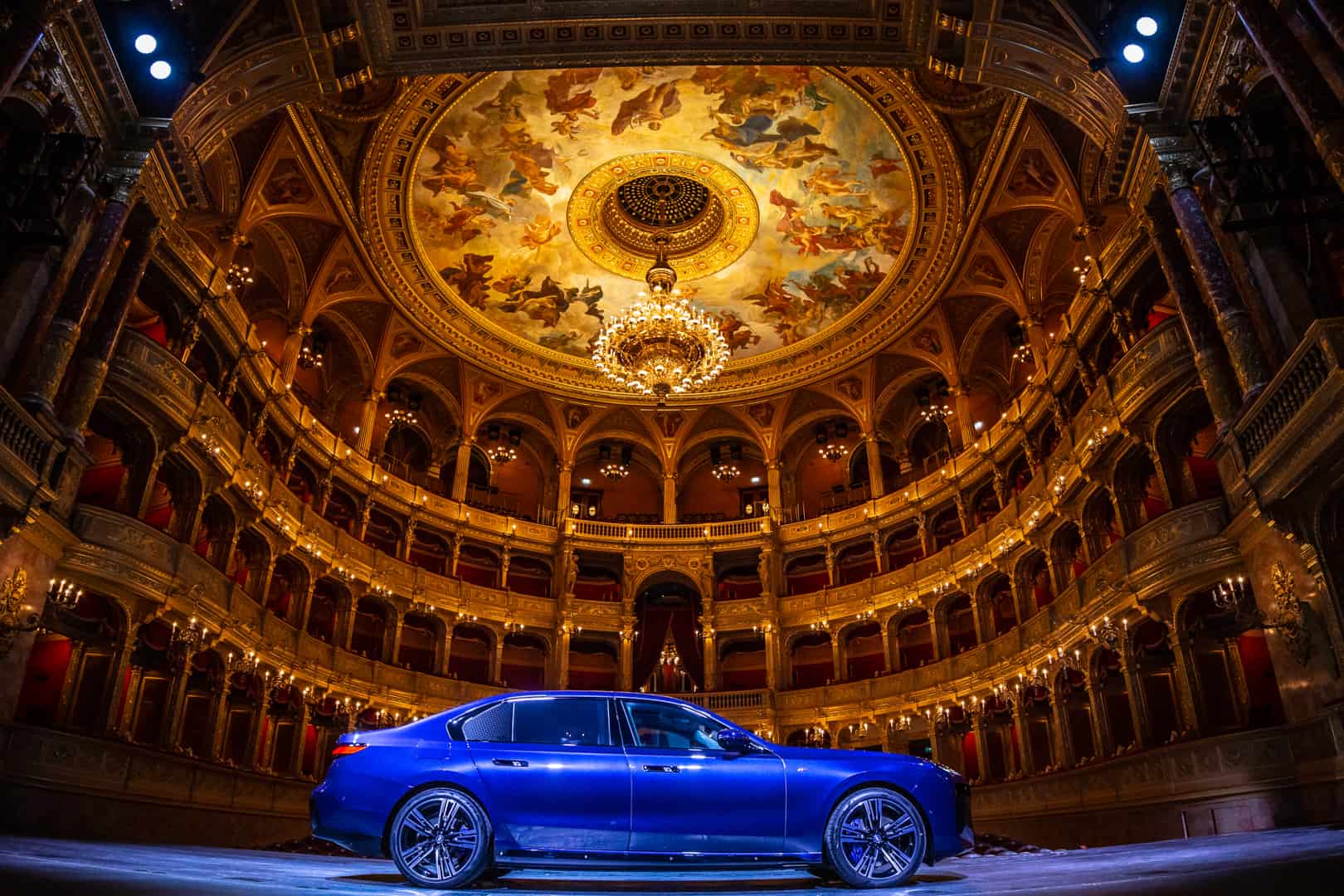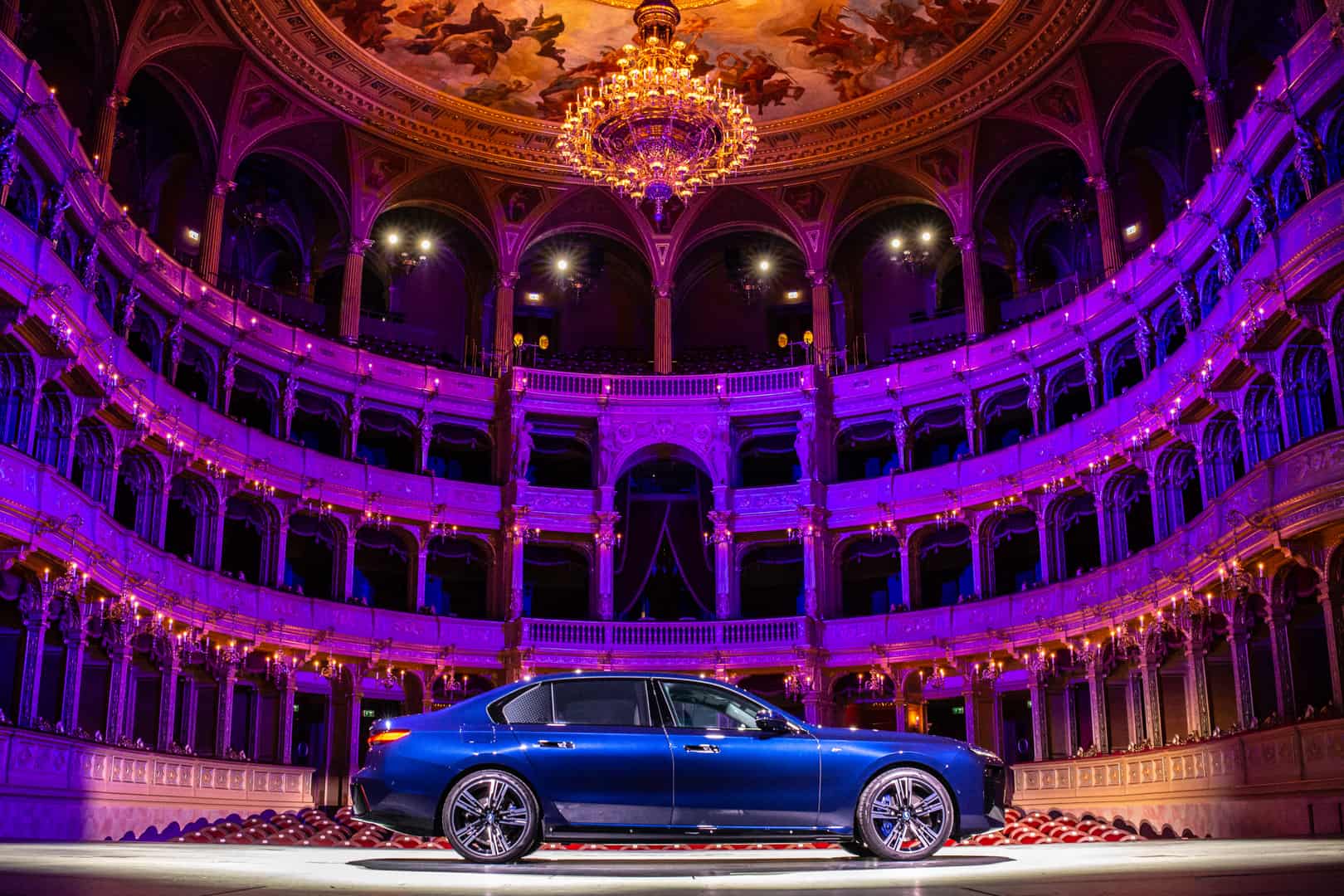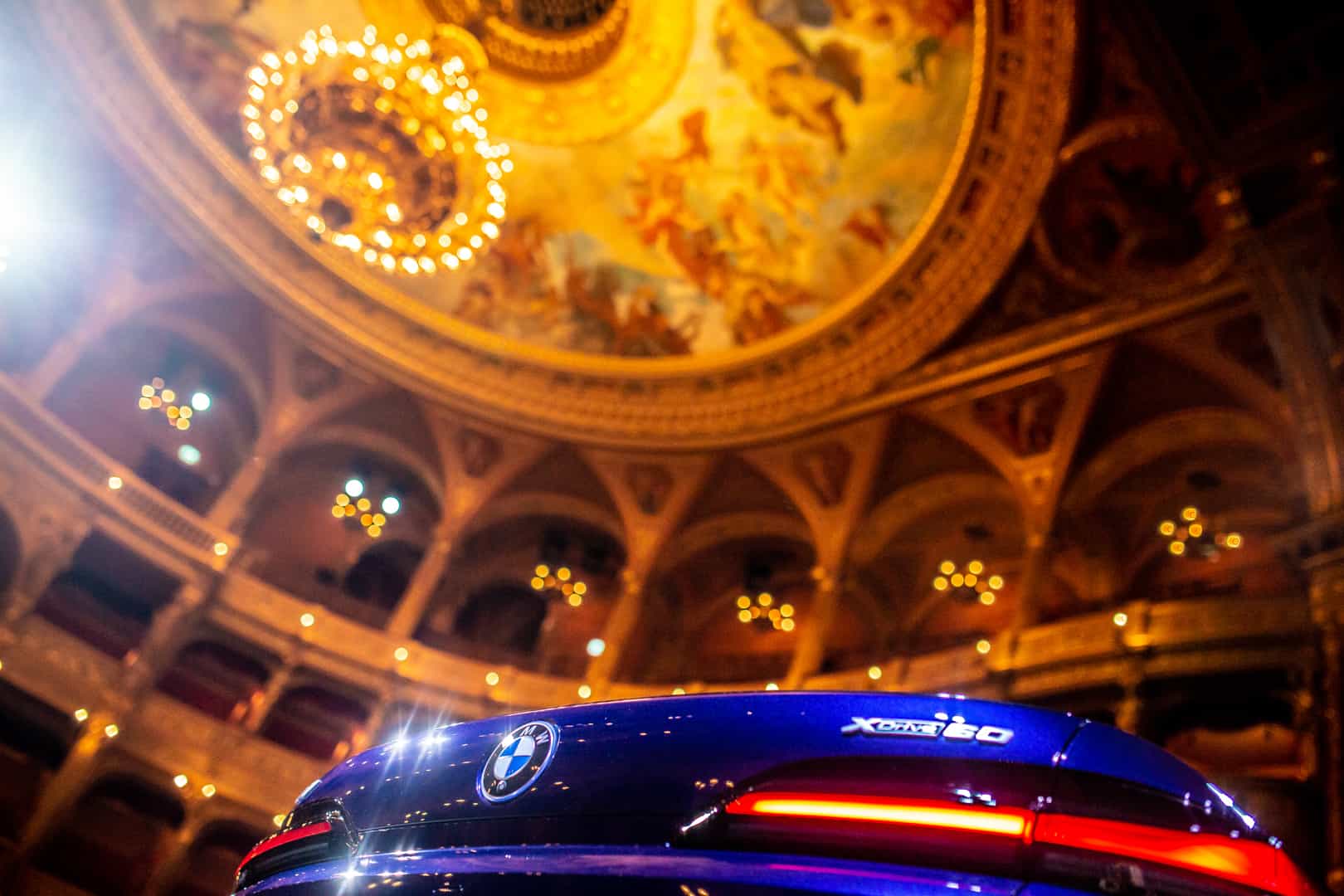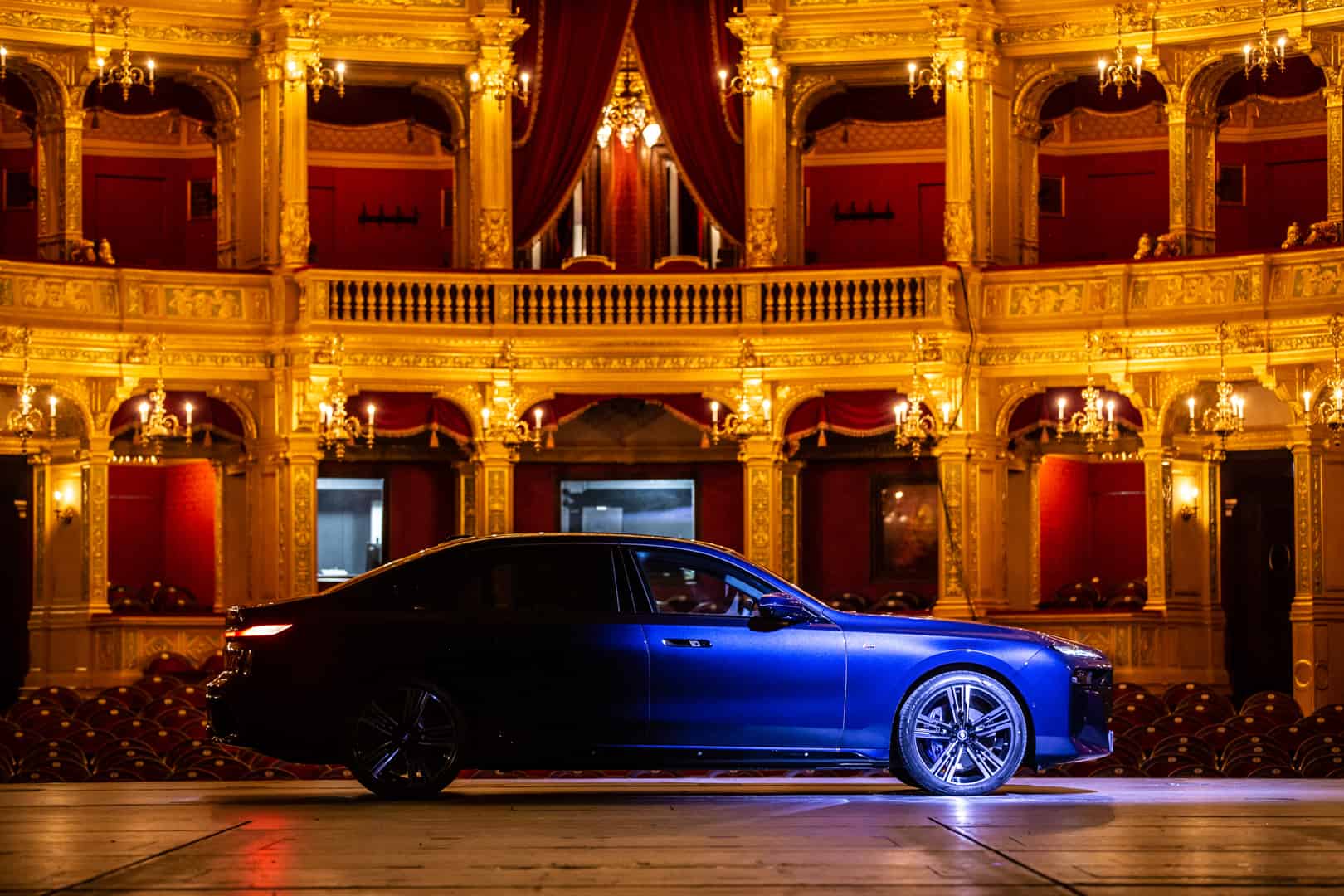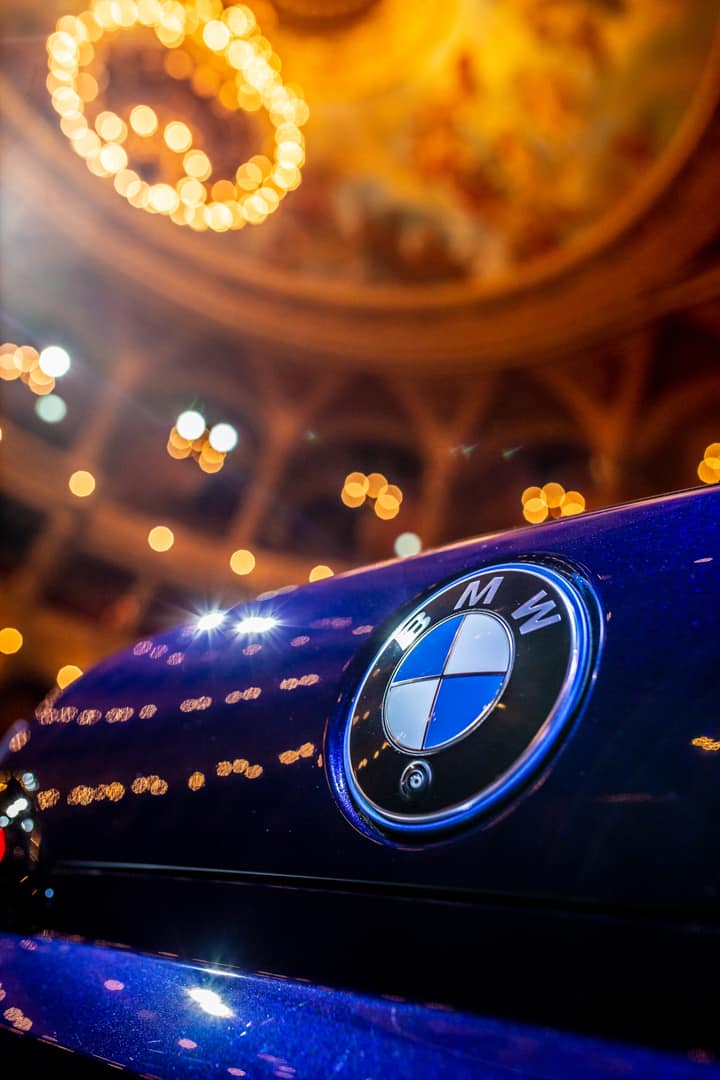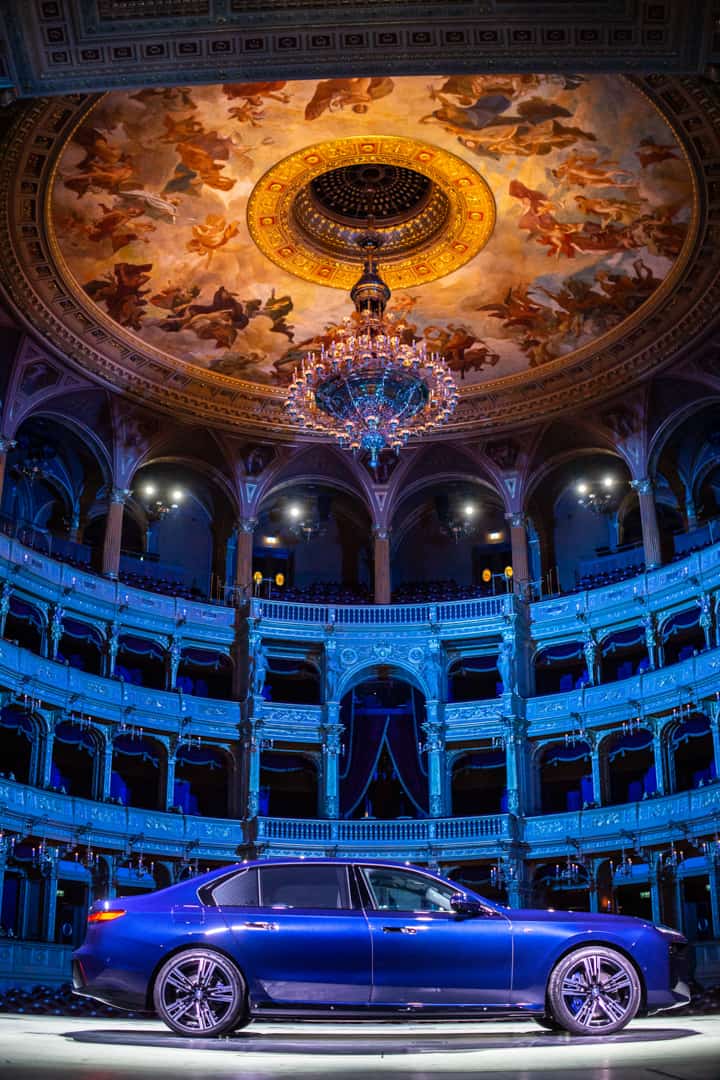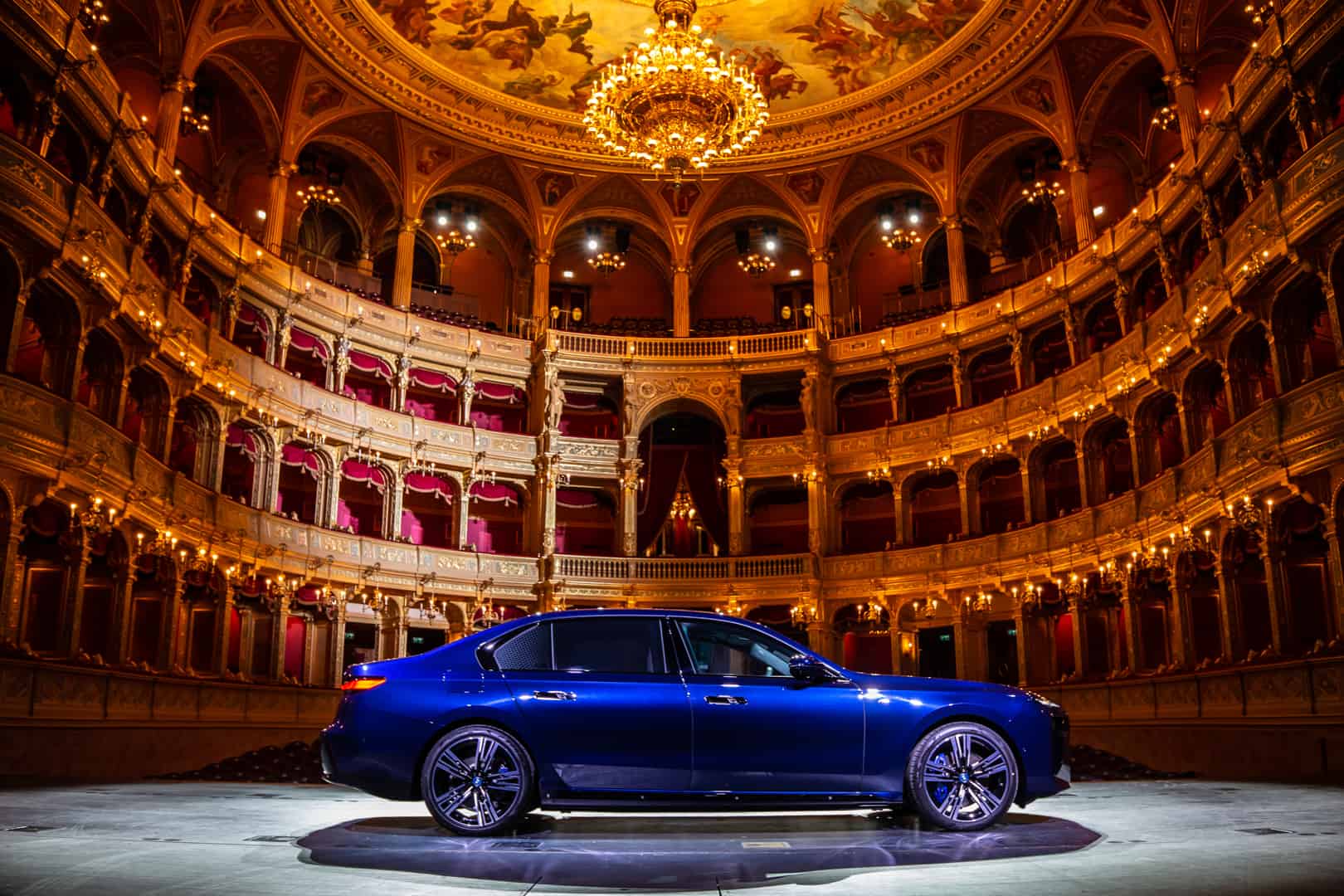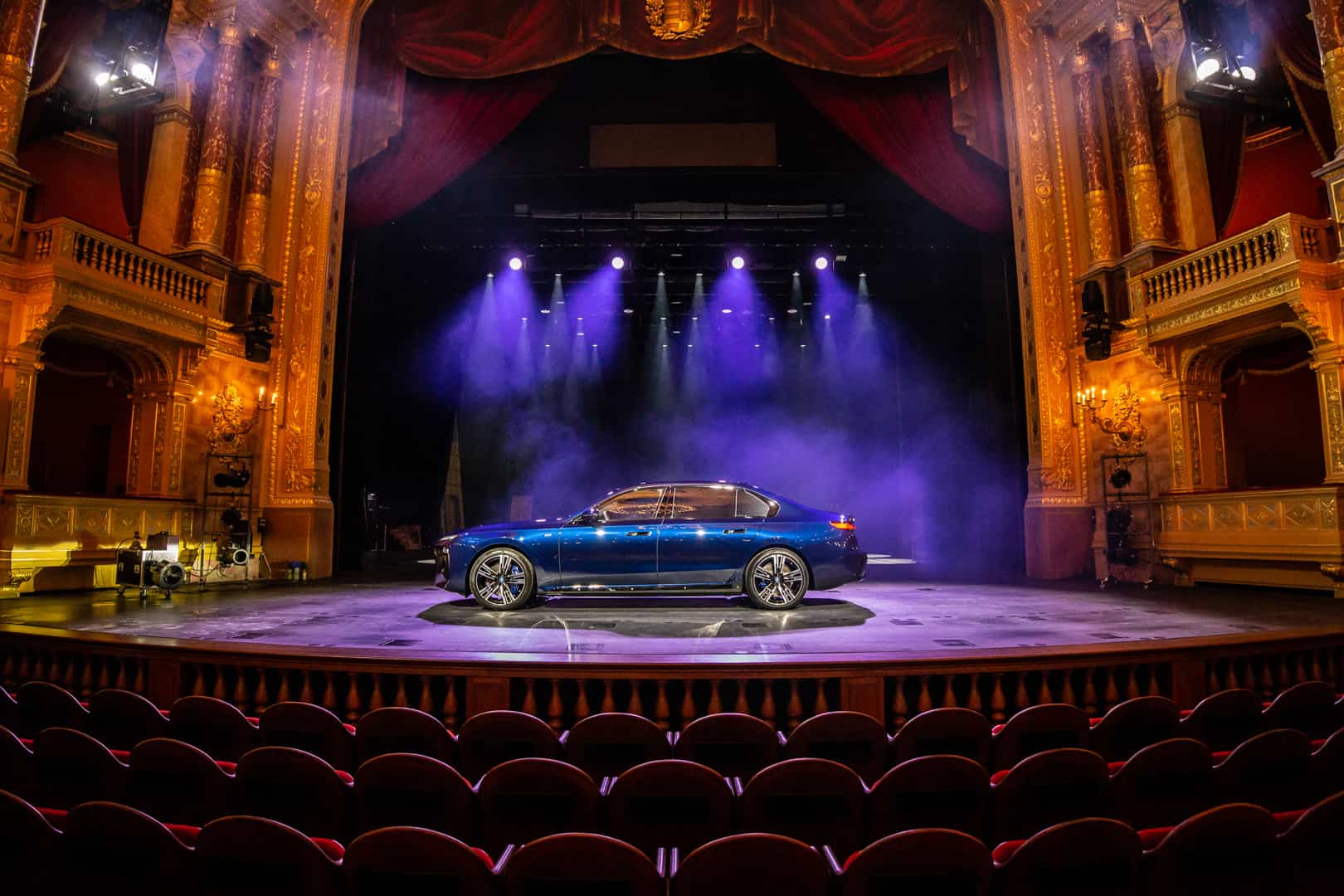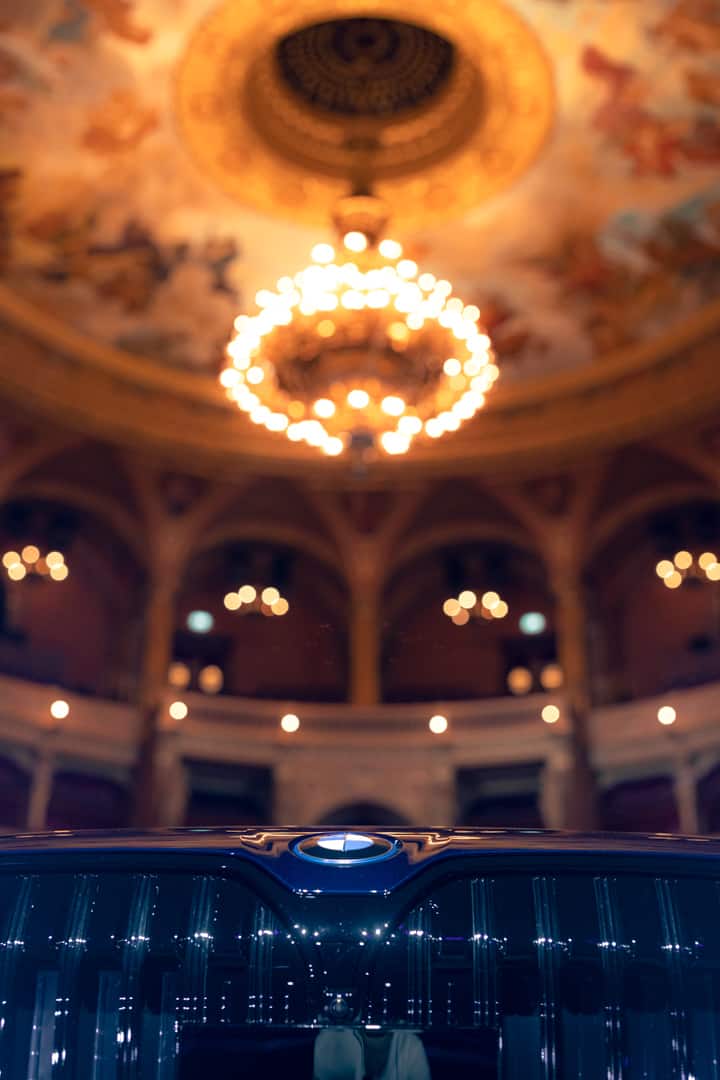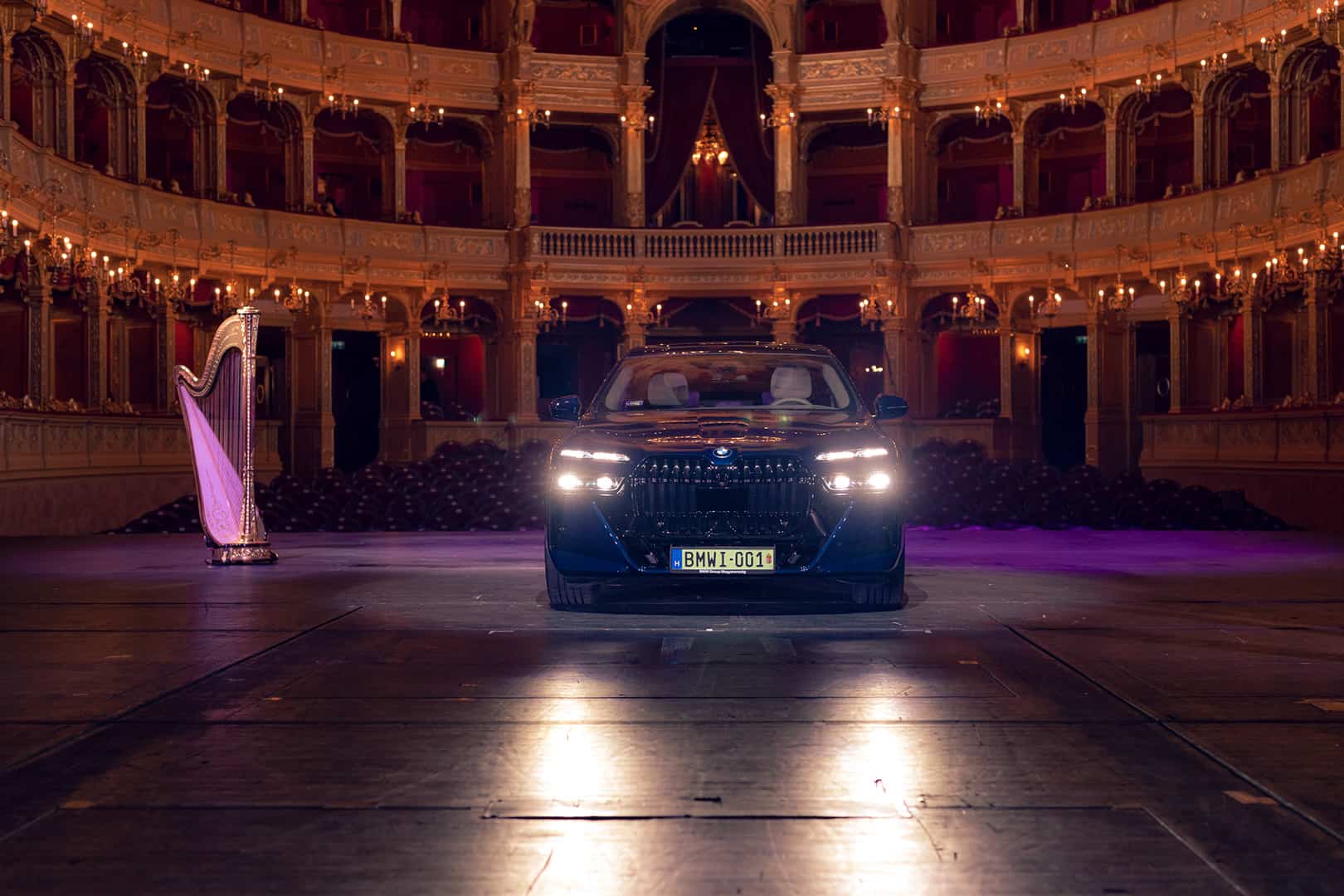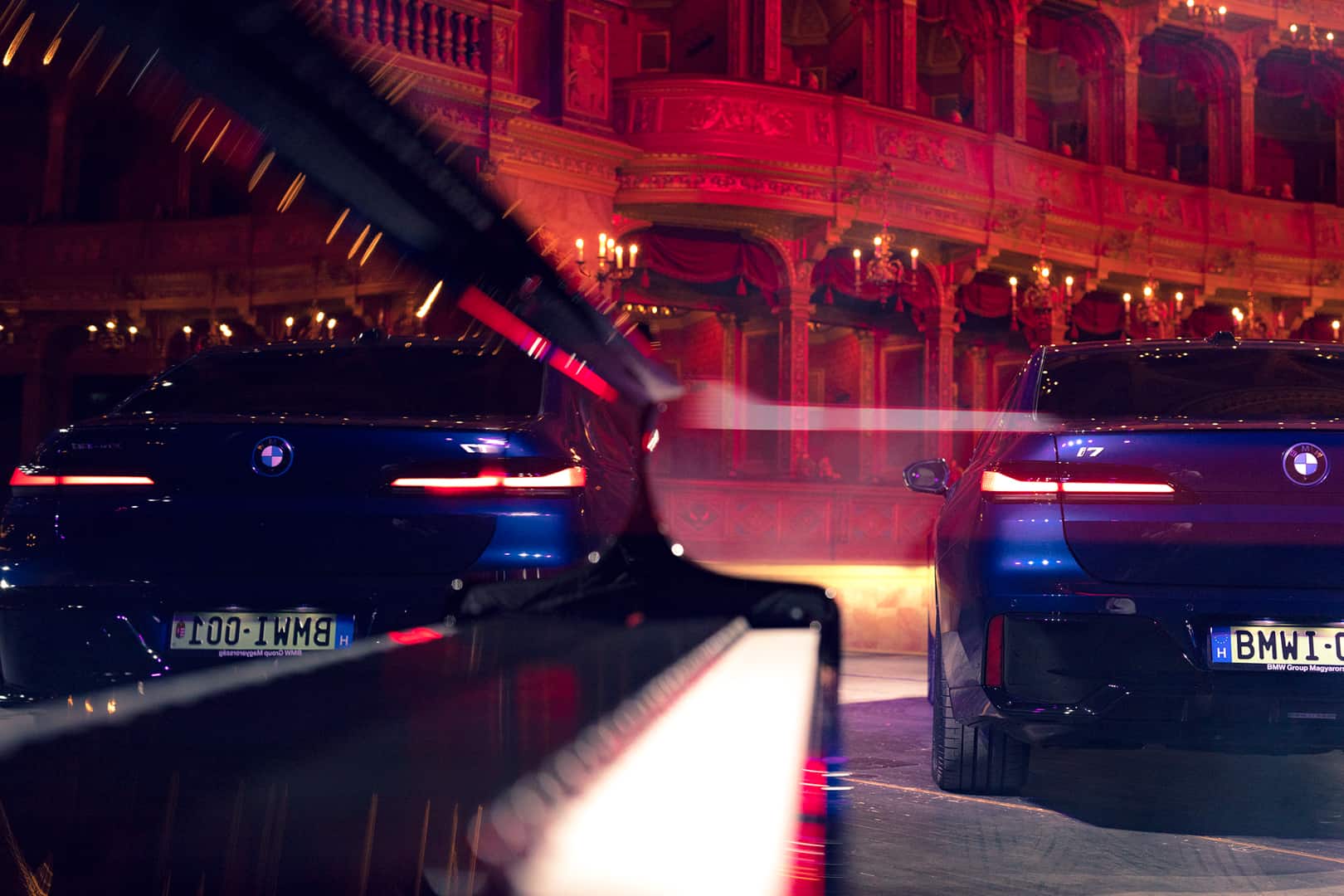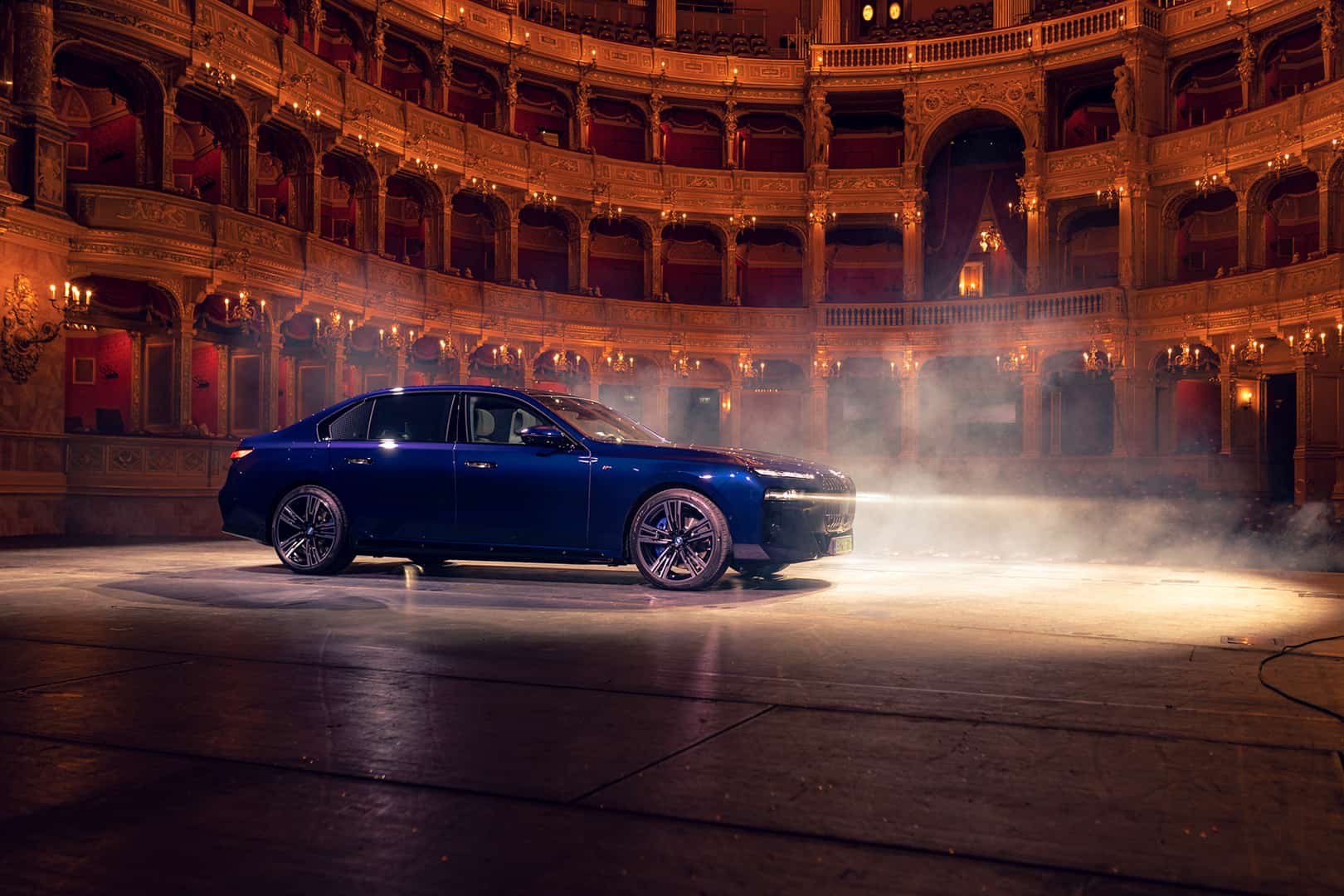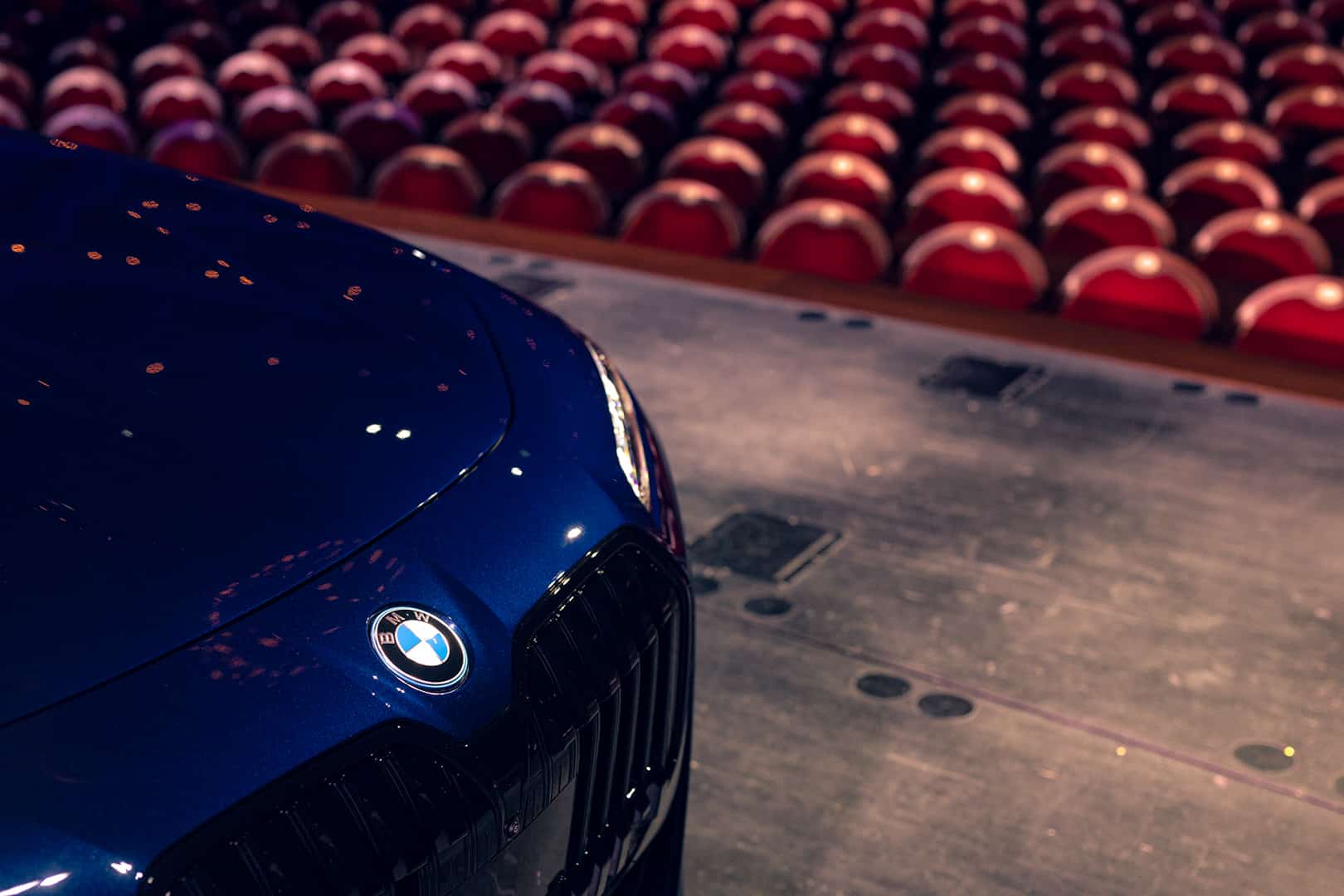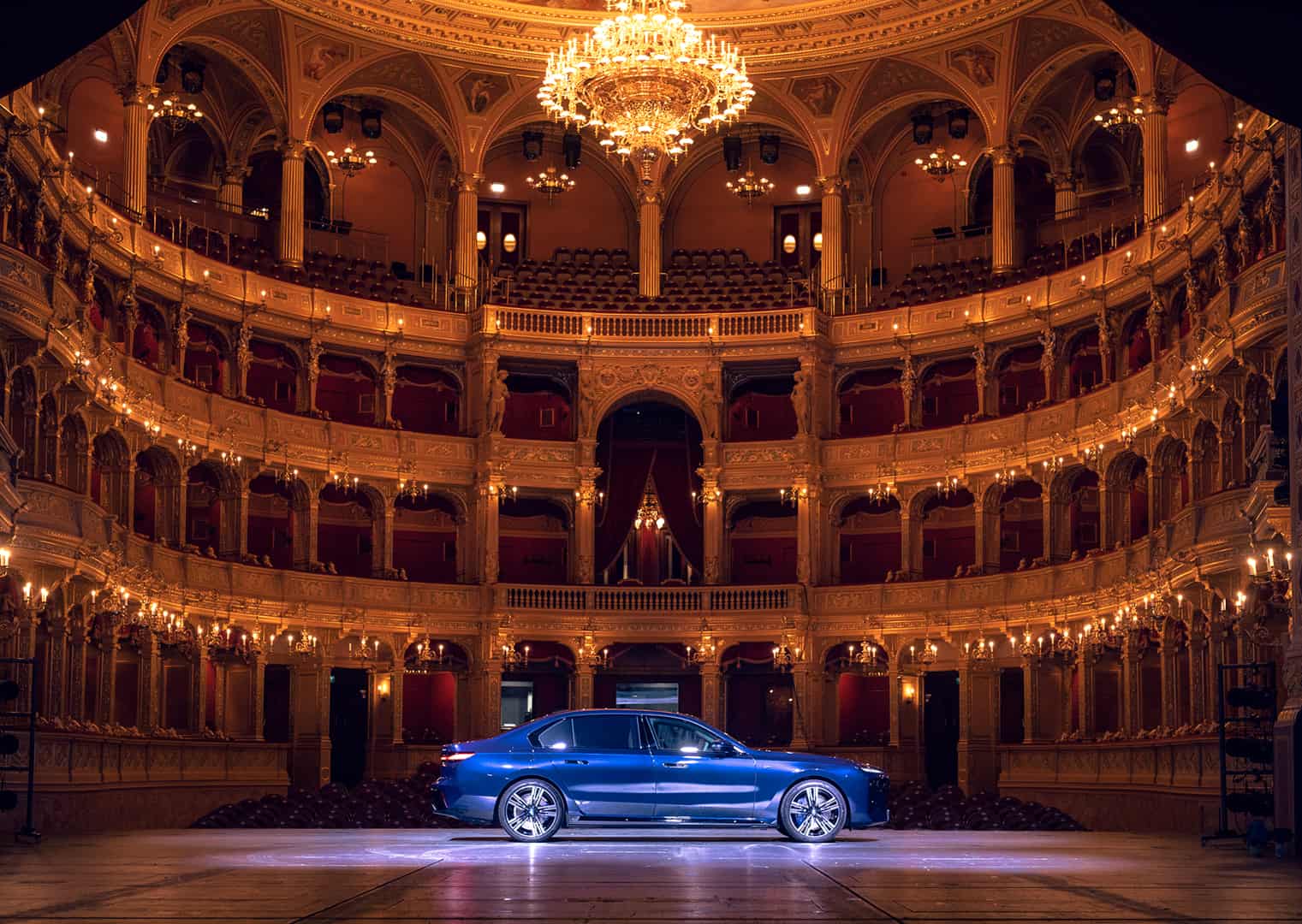All luxury automakers are obsessed with opera houses. I get it, though. Opera houses are fancy, elegant, and sophisticated. They’re also typically filled with the sort of people that can afford six-figure luxury cars. So why not advertise expensive cars at opera houses? It’s a bit predictable but it works. Especially when it’s as beautiful as the Budapest Opera House, which can even make the BMW i7 look pretty.
The inside of the Budapest Opera House is a breathtaking sight of 19th century architecture. The marble work, the wood work, that massive 3,050 kg (6,724 lb) chandelier, and the fresco of Greek gods all make a stunning sight. It also makes the BMW i7 delightfully incongruous. Not only is the i7’s design the furthest thing from elegant and sophisticated, with its massive grille, split headlights, and imposing size, but it’s also extremely high-tech. So it’s a drastic contrast between new and old worlds. I do hope they updated that stage since the 19th century, though, as I’m not quite sure it was originally designed to hold a nearly 6,000 lb car.
In defense of the BMW i7’s looks, it does look good in Tanzanite Blue II Metallic, as it’s one of the car’s better colors. It’s dark enough to hide the oddities in its design while also being metallic and bright enough to give it some pop. It gives the i7 some real character, which is sorely needs.
Under its skin, the BMW i7 only comes in one configuration at the moment: i7 xDrive60. That means it comes with dual motors, making 536 horsepower and 549 lb-ft of torque. BMW claims 0-60 mph in 4.5 seconds, which is appropriate for a car of its size and comfort level. No luxury passenger wants to snap their neck from acceleration.
Will a photoshoot like this convince opera house-goers to purchase themselves a BMW i7? Maybe, maybe not. But I get why BMW’s trying.


